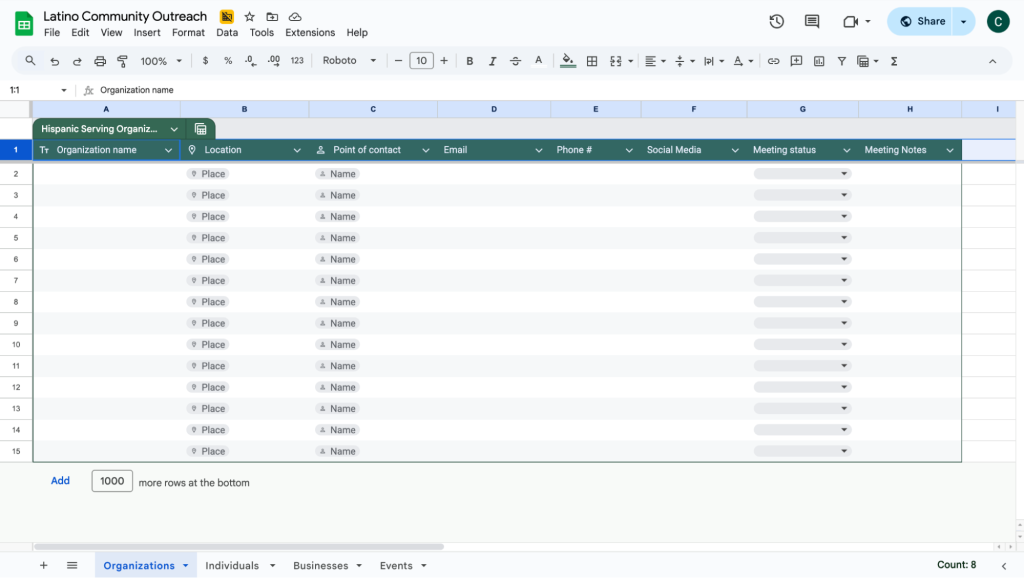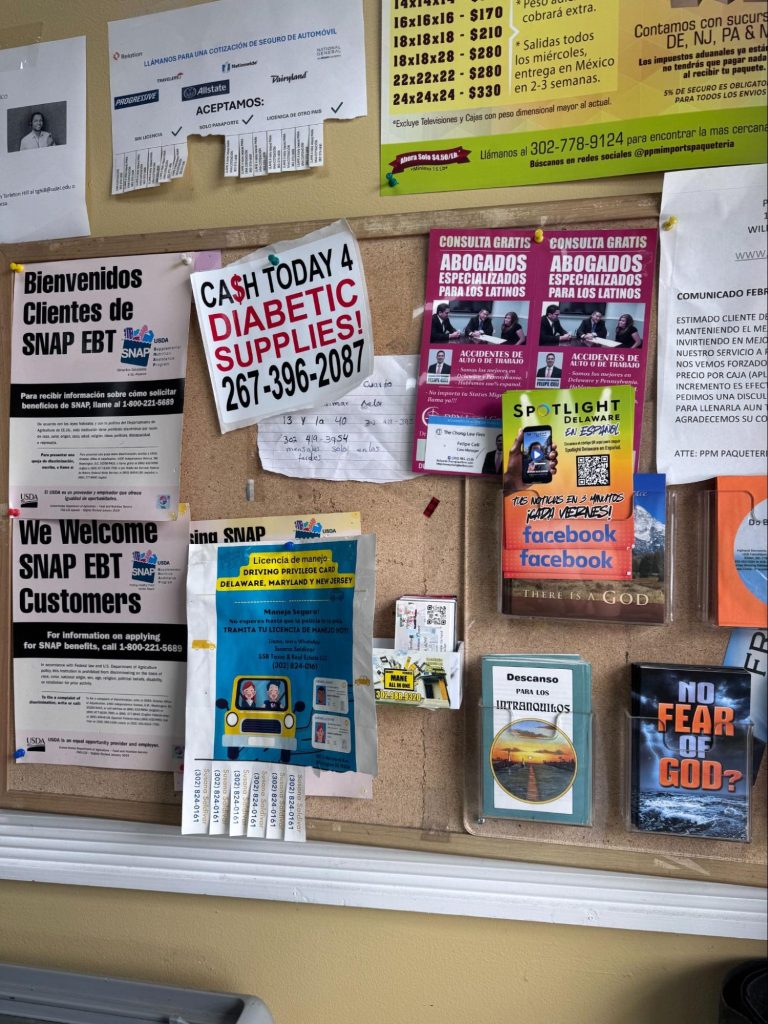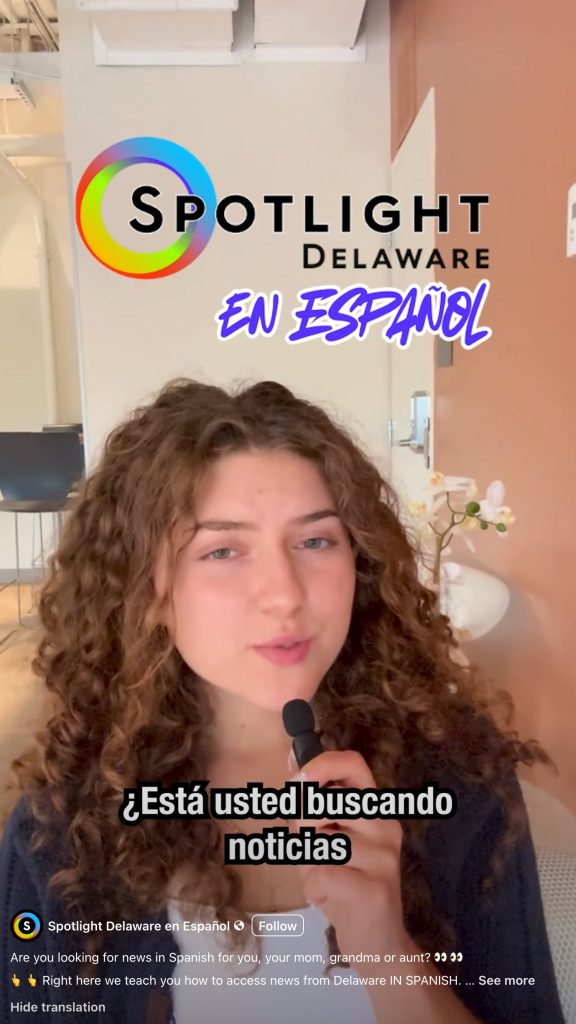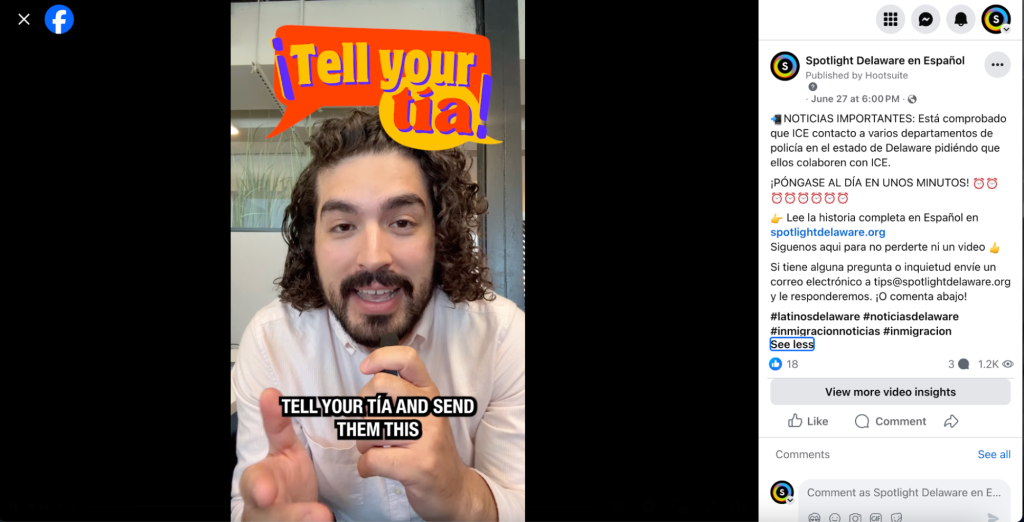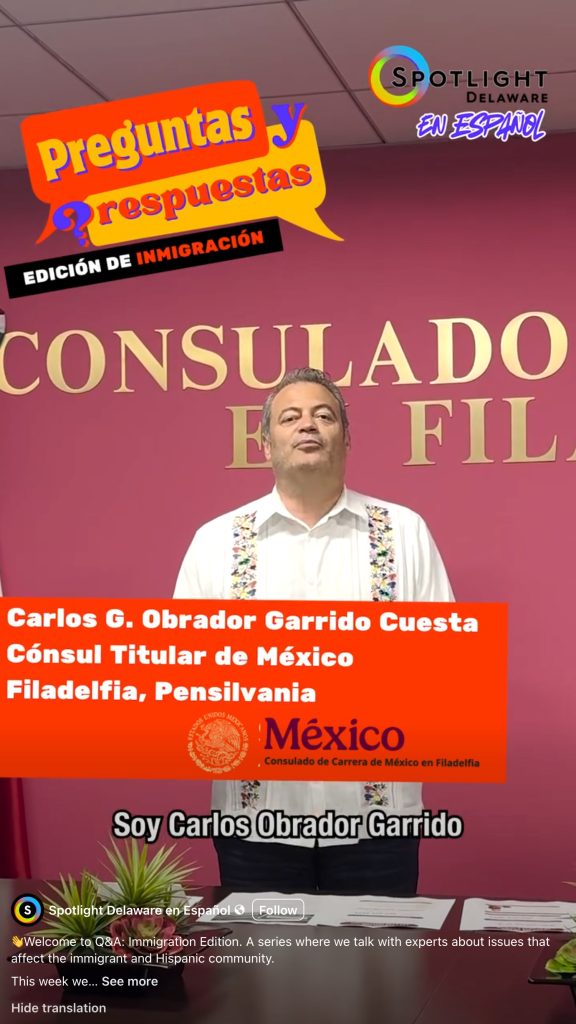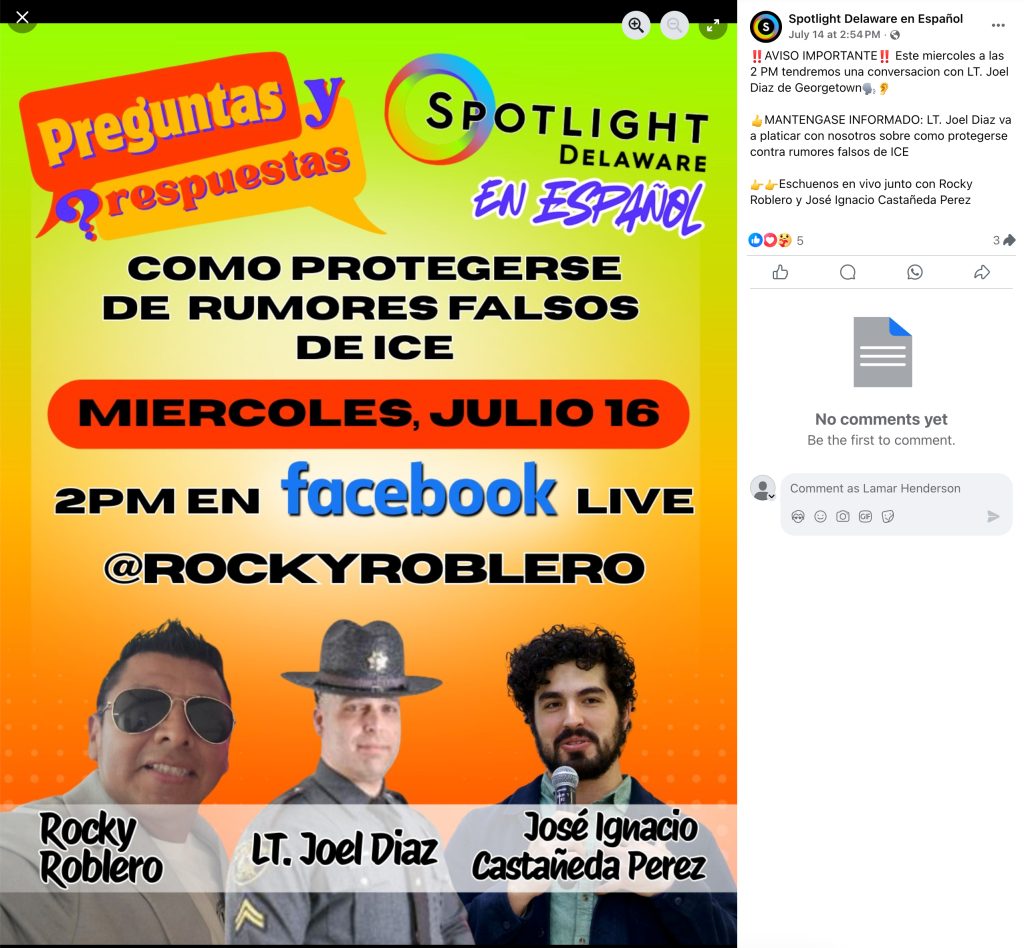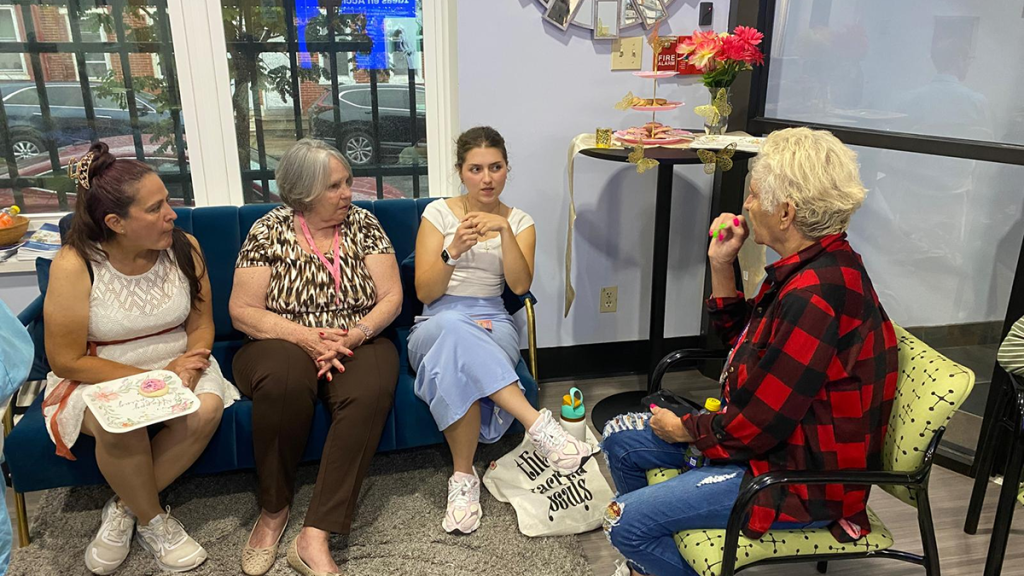
Cristal Sanchez, center, speaks with community members about Spotlight Delaware en Español at the local Latin American Community Center. Photo courtesy of the Latin American Community Center.
Digital and in-person strategies that go beyond translation
How to grow your readership with culturally competent content
Cristal Sanchez is a 2025 RJI Student Innovation Fellow partnered with Spotlight Delaware. The RJI Student Fellows will be sharing their innovative work throughout the summer in Innovation in Focus.
Many traditionally English-language newsrooms are beginning to serve Spanish language audiences. Take CT Mirror, who has developed CT Mirror en Español which aims to serve about 414,000 Hispanic Connecticut residents. Others are bilingual from the start, like El Cicero Independiente in Chicago, or founded to serve Spanish-language communities like Conecta Arizona. Spanish speaking communities are the nation’s largest ethnic minority, making up almost 20% of the population.
Spotlight Delaware, a traditionally English newsroom, recognized that the Hispanic 11% of Delaware’s population also needs policy-focused news, so Spotlight Delaware en Español was born. The initiative started with bilingual reporter José Ignacio Castañeda Perez who launched weekly video recaps in Spanish, alongside the English recaps. All of Spotlight’s stories are also translated into Spanish via the GTranslate tool.
The next goal was to focus on increasing social media outreach and growing engagement and trust with the community. First, we recognized we need to meet the community where they are at – online and in-person.
Resources to replicate these strategies
On the ground
Over these past few weeks we have developed a master Google spreadsheet with contact information to begin in-person outreach. We focused on local small businesses and nonprofit organizations serving the Hispanic community.
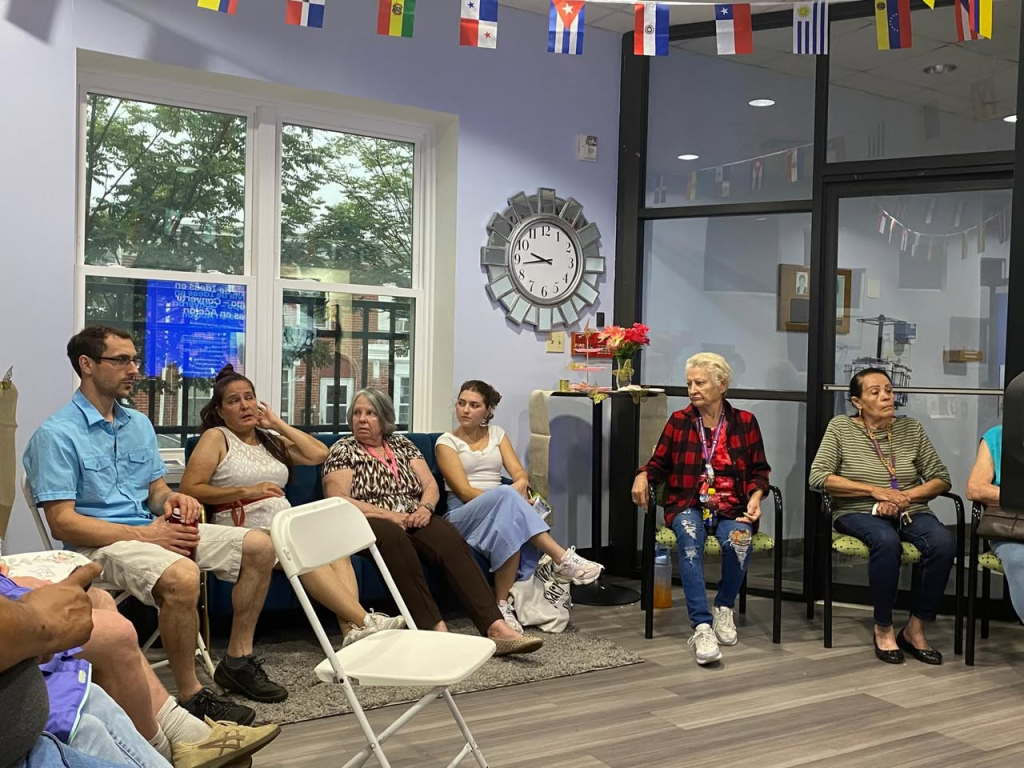
We built the spreadsheet in collaboration with Castañeda Perez whose coverage focuses on the Hispanic community. We also looked for advocacy groups and small Latino-owned businesses, as well as worked with Hispanic news outlets that contributed to this list.
Newsrooms can use this template to replicate this effort in their communities.
We decided to break down groups of people we were reaching out to by different categories: organizations, individuals and businesses. This determined how we would approach each category of people. For example, if we are contacting organizations then we are hoping to include them in our Community Information Hub Partnership Program where partners can reshare our content and reach out with any news tips.
We also added “social media handles” because Spotlight Delaware en Español is partnering with influencers in the Hispanic community. These community influencers typically create Facebook groups that reach thousands of people already.
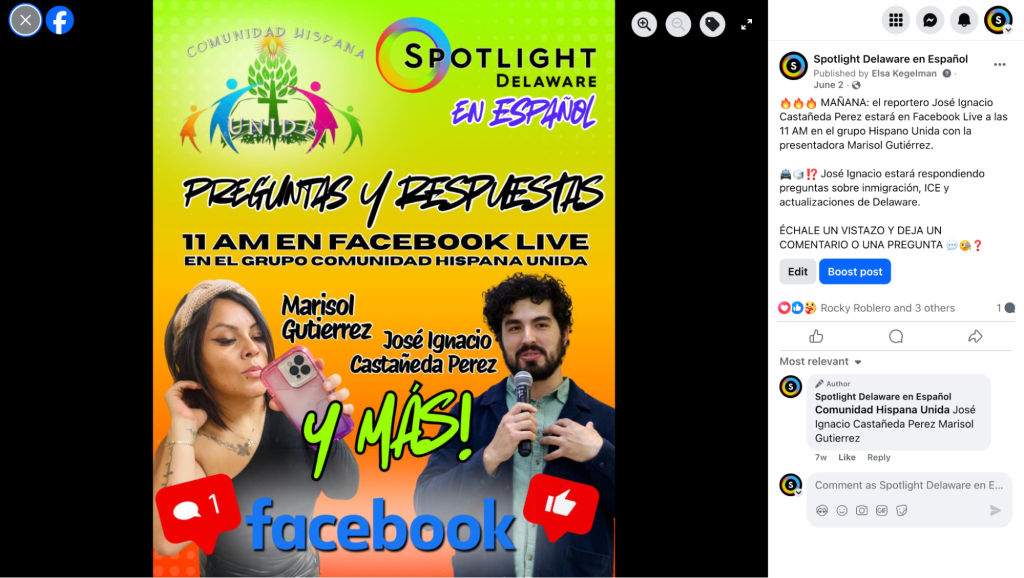
One individual who shares our content and has hosted a Facebook Live with us is Marisol Gutierrez. With an audience of 21.5K people in her Comunidad Hispana Unida group, Gutierrez promotes local businesses and gives space for the community to promote their work and make public service announcements.
Click on the image below to view the video.
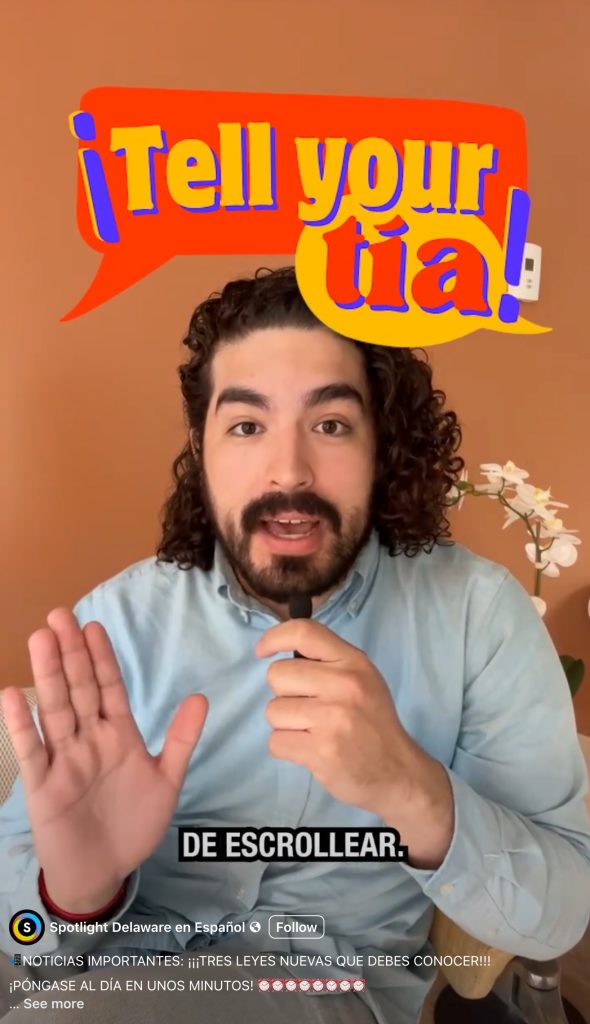
Spotlight en Casa
Spotlight Delaware already hosts community engagement events, whether it’s a pop-up newsroom or a listening session, where the community engagement director and reporters visit locations such as afterschool clubs or local libraries and where they ask community members about what they would like to see in the news. To serve the Hispanic community, we decided to brand these listening sessions as “Spotlight en Casa” (Spotlight at Home), where we plan to table at local churches, festivals and other gathering places. Hispanic Heritage month is coming up which brings the opportunity to table at multiple celebrations and festivals.
Community crawls en Español
Our “community crawls” are one-day, in-person trips meant to connect reporters with the local community, including visits to local grocery stores, restaurants and community organizations. As of right now, we’ve been doing them weekly, designating one day a week to a different specific county. For sustainability purposes, the newsroom is planning on conducting these trips on a quarterly basis after this summer with a few reporters. For example, our new Southern Delaware team will plan one before the end of the year.
With these informal community crawls we acknowledge that building trust with the Hispanic community means showing up consistently. Hispanic businesses traditionally have an area to place community announcements, which is where we posted our Spotlight Delaware en Español postcards. We designed these postcards using culturally relevant colors and fonts, as well as providing the contact information for our bilingual reporters — all in Spanish. So far, we’ve been to over 60 local bodegas, restaurants and community organizations, meeting with people at each location.
During “Spotlight en Casa” events, we make sure to leave postcards with information on how to translate our website to Spanish and the names and numbers of our bilingual reporters.
When we survey the community in-person, we ask some of these questions:
- How often do you engage with the Hispanic community?
- Where do you get your news? Is there a specific medium you prefer?
- What news outlets do you tend to go to? Why?
- What is your experience with journalists?
- What issues would you like to see covered?
- Do you know about Spotlight Delaware en Español? If so, how did you find out about us?
The goal is not to ask individuals every question; it’s more to be conversational and build trust with the community.
You can organize your own “community crawls” using this template.
Connecting digitally
Based on community crawls, the feedback we received is that most of the Delaware Hispanic community obtains their news via Facebook and online videos. Newsrooms can also look at national research that shows Latinos are more likely than White Americans and Black Americans to prefer getting news digitally. The same research shows that culturally specific content is preferable to reach Latinos, as half of U.S. Hispanic adults say they “at least sometimes” get news from Hispanic news outlets.
Spotlight Delaware en Español started with weekly video recaps routinely posted on Facebook, Instagram, YouTube and Tiktok. The content was a translation from the English weekly recaps, with the Spotlight Delaware en Español logo. We wanted to engage and grow our baseline audience of 370. As of July 24 we now have 427 followers after undertaking new strategies.
Then the newsroom started experimenting with making the content more targeted and culturally translatable. Here are a couple of our initiatives:
Tell your Tia
“Tell your Tia”, or “Tell your Aunt” was born out of the need to create Spanish video recaps and create content for the Hispanic community instead of relying purely on translations of English content. We want the community to know this news is produced for them. We started with an explainer piece on how to translate our website to Spanish.
Click on the image below to view the video.
Our goal is to continue growing our Spanish-speaking audience, while also reaching second-generation audiences of our bilingual audience who would like to send accurate news to their loved ones in Spanish.
Results
In the last 90 days, our insights show that three of the five top performing posts were “Tell your Tia” videos. Our shares have also increased, reaching up to 31 shares from an audience of 408 followers as of July 18. We have been seeing consistent shares after the launch of “Tell your Tia”.
We’ve found the most success through sharing the “Tell Your Tia videos” on Facebook community groups. We’ve also seen a significant uptick in ‘favorites’ on TikTok, which may mean that more people are showing the videos to their friends and family later, according to Elsa Kegelman, Spotlight Delaware’s marketing and events manager.
Preguntas y Respuestas
While the “Tell your Tia” recaps could be about any issue the Hispanic community needs to know about, the “preguntas y respuestas” videos specifically cover immigration-related “breaking” news.
Below is an example of one we are publishing in response to concerns from the community that people were impersonating immigration attorneys and scamming individuals. Here we asked the local head of the Mexican Consulate what the community can do to prevent being scammed.
Click on the image below to view the video.
Facebook Lives
Preguntas y Respuestas also works as a live video. Below is an example of a Facebook Live we conducted with our bilingual reporter, a media influencer and a local lieutenant, in response to a story by Delaware Online about two men who falsely impersonated ICE and assaulted a man. We interviewed the consulate and created the video below to be published on all our social media platforms.
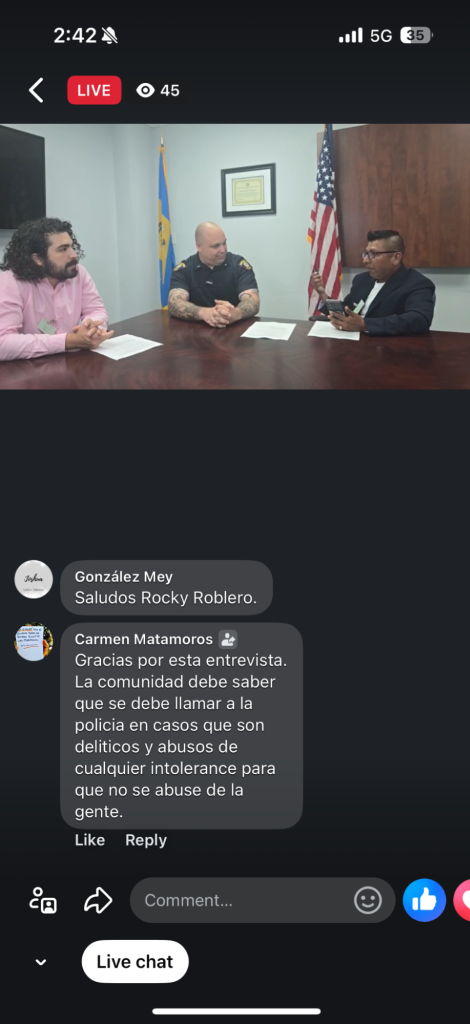
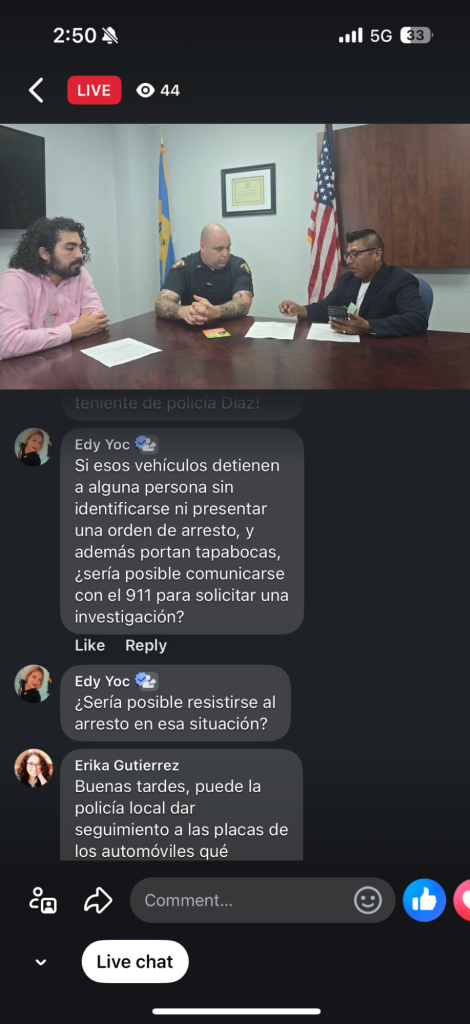
Spotlight Delaware en Español recently hosted in collaboration with a local community influencer and a local lieutenant to speak on how the community can protect themselves against false ICE rumors. Viewers expressed gratitude and asked questions for the lieutenant to answer.
Final recommendations
- If you want to reach a community, your newsroom should reflect and be a part of the community.
- Meet people where they are at. Online? Fb groups? Or local churches? Restaurants? Boutiques?
- Acknowledge there may be mistrust in the community if you haven’t had a strong relationship with them in the past. Be open to conversations and allow them to suggest what you can do differently. From there, build genuine relationships and keep showing up – don’t just parachute into a community occasionally.
- Don’t be scared to use color. Our design for Spotlight Delaware en Español is intentional. The bold, dramatic colors with the use of capital letters and emojis all let our community know we pay attention to the way they communicate. Do your research and design your brand along that.
- The Hispanic community is NOT a monolith. Immigration is such an important issue that a lot of newsrooms are paying attention to right now – and that is important – but it’s equally important to realize not all Latino are immigrants. Newsrooms should not just be reaching out to these communities to obtain sources for immigration stories. One of the most received comments from the community crawls was a need for more uplifting community stories.
Cite this article
Sanchez, Cristal (2025, Aug. 6). Digital and in-person strategies that go beyond translation. Reynolds Journalism Institute. Retrieved from: https://rjionline.org/news/digital-and-in-person-strategies-that-go-beyond-translation/

